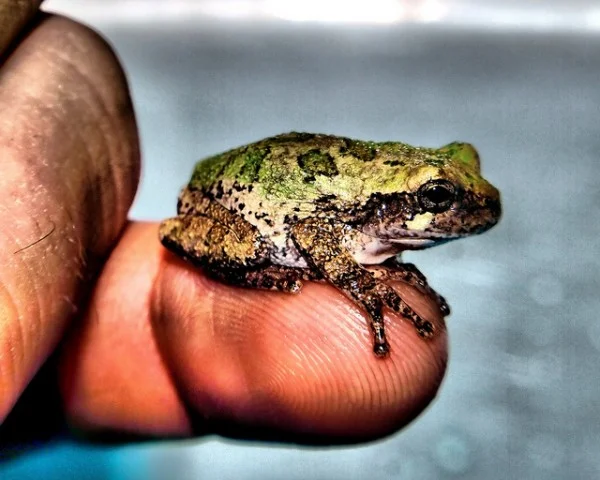Author: Caitlin Devor
Institution: Allegheny College
Date: February 2012
A newly described frog species from New Guinea is now recognized as the world’s smallest vertebrate, averaging only 7.7 millimeters in length—small enough to sit comfortably on the face of President Roosevelt on an American dime.
The frog may aid researchers in the quest to understand the functional constraints of animals at either extreme of the body size spectrum.
Christopher C. Austin, assistant professor at Louisiana State University and head curator of herpetology and amphibians at the Museum of Natural Science in Baton Rouge, is primary investigator of the lab that discovered the new species, named Paedophryne amauensis.
“Finding the world’s smallest vertebrate is interesting from a headline-grabbing standpoint, but that’s not necessarily the most interesting thing,” Austin said, referring to the lack of scientific understanding surrounding the functional constraints of vertebrate bodies.
Animals at either end of the body size spectrum tend to be aquatic: blue whales are the world’s largest vertebrate and before P. amauensis was found, the world’s smallest known vertebrate was a species of fish called Paedocypris progenetica. The discovery of P. amauensis “slightly challenges” this colloquially dubbed Aquatic Hypothesis, Austin said, since the frog is terrestrial.
P. amauensis, named for the Amau River running through the area where it was discovered, lives in the leaf litter on the ground of the tropical wet rainforests in Papua New Guinea.
Small frog species are often preyed upon by larger invertebrates, including scorpions and centipedes. Small frogs eat acarians, including mites and ticks, and arthropods called collembolans. Little is known about the ecology of P. amauensis and its role in the leaf litter habitat. The lifespan of the frog is likely about one year, the typical length for similar species.
The field research team from Louisiana State University located the frogs by listening for their calls. To locate animals this small at dawn and dusk, researchers rely more on sound than sight.
“[The call] sounds a little bit like a cricket [due to its high pitch] to people from North America,” Austin said. “To find these frogs, you really just grab a handful of leaf litter and put it into a plastic bag. Then you go through, leaf by leaf, until you hopefully see the frog.”
Because females of the species do not make calls, researchers only identified males, which is not usual for frogs from the genus Paedophryne. Females are expected to be similar in size to the males.Extreme miniaturization in terrestrial frogs evolved eleven separate times, based on analyses of evolutionary relationships among frogs. For researchers, this means tiny size is not a new or “short-lived evolutionary experiment or fluke,” Austin said.
Austin’s team also reported the discovery of another species of tiny frog from the same region, Paedophryne swiftorum. P. swiftorum is about one millimeter longer than P. amauensis and has a call characterized by a series of four pairs of notes at a lower pitch than the call of P. amauensis.
All frogs exchange water and gas through their skin, and due to a high surface-area-to-volume ratio, tiny frogs dehydrate very easily. Because small frog species are only found in wet environments, it is likely that their need to stay hydrated caused them to evolve only in wet tropical rainforests, like those of New Guinea, rather than the tropical dry forests like those of Southern Mexico.
A recording of the male P. amauensis call can be heard on Austin's personal website. The article, titled “Ecological guild evolution and the discovery of the world’s smallest vertebrate,” was published online by the Public Library of Science ONE on January 11, 2012.
This science news brief was written under the guidance of JYI Science Writing Mentor Sathya Achia Abraham.


